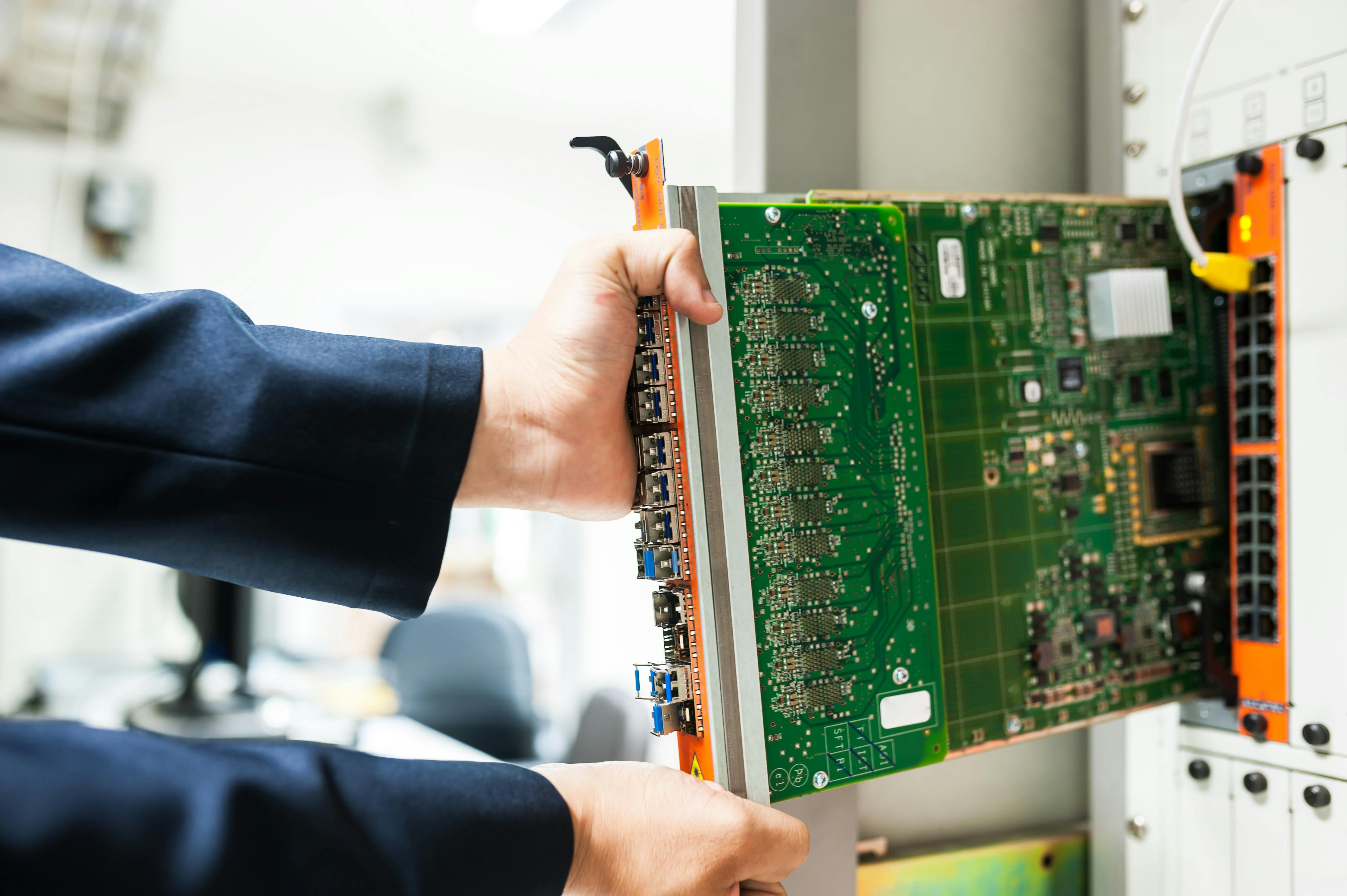Is your Windows 11 Ethernet speed limited? You’re not alone! Many users have encountered frustrating slow internet speeds after upgrading to Windows 11, leaving them wondering how to restore their connection’s full potential. In this article, we will delve into the common causes of Ethernet speed limitations and provide you with the top fixes to boost your connectivity. If you’ve been feeling the drag from sluggish downloads or buffering videos, read on to discover effective solutions that can get your internet back on track!
Understanding why your Ethernet speed is limited on Windows 11 is crucial for resolving these issues efficiently. Several factors could be at play, including outdated drivers, incorrect settings, or even hardware malfunctions. Have you ever checked if your network adapter drivers are up-to-date? Outdated or corrupted drivers are often the culprits behind poor performance. Additionally, misconfigured settings can impede your connection speed. As we explore these topics, we’ll empower you with actionable steps that can lead to a noticeable improvement in your internet experience.
Whether you’re a gamer, streamer, or remote worker, having a reliable and fast internet connection is essential. Don’t let a limited Ethernet speed hold you back from enjoying seamless online activities. Join us as we unveil the best troubleshooting methods and expert tips to optimize your Windows 11 Ethernet connection. Say goodbye to slow speeds and hello to a faster, more efficient browsing experience today!
Unlock Faster Internet: 7 Proven Solutions to Resolve Windows 11 Ethernet Speed Limitations

Unlocking faster internet on Windows 11 can feel like an uphill battle, especially when your Ethernet connection seems to be limited. Many users in New York and beyond have been facing this issue. If you find yourself frustrated with slow speeds, don’t worry! Here’s a guide with proven solutions to tackle those pesky Ethernet speed limitations.
Check Your Ethernet Cable
One of the first things you should do is inspect your Ethernet cable. A damaged or low-quality cable can totally drag down your internet speed. Look for any visible frays or kinks. If you only have an old cable, consider replacing it with a Category 6 or Category 7 cable for better performance.
Update Network Drivers
Outdated drivers can lead to all sorts of connectivity issues. To update your network drivers, go to Device Manager, find Network adapters, right-click on your Ethernet adapter, and select “Update driver.” Windows will search for any available updates and install them automatically. Keeping drivers fresh can often solve many speed problems.
Disable Background Apps
Sometimes, background applications suck up your bandwidth, leaving you with slow internet speed. Check which apps are running in the background and close the ones you do not need. You can also go into your settings and limit background data usage, which can help prioritize your connection for more important tasks.
Adjust Network Adapter Settings
Windows 11 offers various settings that can optimize your Ethernet performance. Go to Network & Internet settings, then find your Ethernet connection. From there, you might want to adjust properties like “Speed & Duplex” settings. Switch this to “Auto Negotiation” or try different settings to see what works best.
Change DNS Settings
Sometimes, the DNS server you are using can impact your internet speed. Switching to public DNS servers like Google’s (8.8.8.8 and 8.8.4.4) can improve your connection. To change your DNS settings, go to Network & Internet settings, click on Ethernet, and then choose “Edit” under DNS settings.
Disable IPv6
Some users found that disabling IPv6 can resolve speed issues. Go back to your Ethernet properties, find Internet Protocol Version 6 (IPv6), and uncheck it. This can sometimes lead to improved performance, especially if your ISP doesn’t support it well.
Use a Wired Connection
If you are using Wi-Fi, switching to a wired connection can make a significant difference in your internet speed. Ethernet connections are usually faster and more reliable than wireless. If you have been relying on Wi-Fi, plug in directly and see if your speeds increase dramatically.
Monitor Bandwidth Usage
Keeping an eye on bandwidth usage can help identify which applications are hogging your connection. Tools like GlassWire or NetBalancer allow you to monitor and control the bandwidth usage of different applications. This way, you can prioritize your important tasks and ensure smooth browsing.
By implementing these solutions, you can potentially unlock faster internet speeds on your Windows 11 system. Many users have found success with these methods, so give them a try. Often, a combination of these adjustments will yield the best results. If your Windows 11 Ethernet speed is still limited after trying these fixes, it may be worth contacting your Internet Service Provider for additional support.
Taking these steps, you can enhance your Ethernet connection and enjoy a smoother online experience. Don’t let slow speeds hold you back from enjoying all the digital content available today!
Is Your Ethernet Speed Sluggish? Discover 5 Common Causes and How to Fix Them in Windows 11

Is your Ethernet speed sluggish? It’s a frustrating issue many users face, especially with the advanced features of Windows 11. If you find your internet crawling when connected via Ethernet, knowing the possible causes can help you troubleshoot effectively. Let’s dive in and discover five common problems and how to fix them!
1. Faulty Ethernet Cable
One of the first things to check is the Ethernet cable itself. Sometimes, a damaged or low-quality cable can limit your speed significantly. If your cable is frayed, bent, or too old, it could be time for a replacement.
- Check for physical damage: Look for cuts, tears, or kinks.
- Test with another cable: If you have another Ethernet cable, try swapping it out to see if that fixes your issue.
2. Network Adapter Settings
Windows 11 provides various configurations for your network adapter that could affect speed. Misconfigured settings may lead to a limited Ethernet speed.
- Navigate to Device Manager: Right-click on the Start button and select “Device Manager.”
- Find Network Adapters: Expand this section and locate your Ethernet adapter.
- Check Properties: Right-click on your adapter, select Properties, and look under the Advanced tab for settings like “Speed & Duplex.” Set it to “Auto-Negotiation” if it’s not already.
3. Outdated Drivers
Outdated or incompatible network drivers can severely impact your Ethernet performance. Windows 11 may not always update drivers automatically, so checking for the latest version is crucial.
- Open Device Manager: Again, right-click the Start button and select “Device Manager.”
- Update Drivers: Right-click your Ethernet adapter, choose “Update driver,” and follow the prompts to search for updated drivers automatically.
4. Background Applications
Sometimes, background applications or services may be hogging your bandwidth, leading to sluggish speeds. This includes updates, cloud backups, or even streaming services running in the background.
- Check Task Manager: Press Ctrl + Shift + Esc to open Task Manager.
- Look for bandwidth usage: Under the Processes tab, see which applications are using the most network resources. Close any unnecessary apps that might be consuming bandwidth.
5. Router Configuration
Your router settings could also limit your Ethernet speed. If your router is outdated or has incorrect configurations, it can create bottlenecks.
- Reboot your router: Sometimes, simply restarting your router can clear up issues.
- Access router settings: Log into your router’s admin panel (usually by typing 192.168.1.1 in your web browser) and review settings. Ensure Quality of Service (QoS) settings aren’t limiting your Ethernet speeds.
In summary, sluggish Ethernet speeds on Windows 11 can be caused by various issues, from faulty cables to misconfigured settings. Taking the time to troubleshoot each of these areas can greatly improve your connection.
Remember, maintaining a good Ethernet connection is essential for a smooth online experience, whether you’re gaming or working from home. Regular checks on your hardware and software can ensure you get the best performance out of your internet. So, don’t let slow speeds get you down!
Maximize Your Connection: Step-by-Step Guide to Boosting Ethernet Speed on Windows 11

Are you tired of your slow internet connection on Windows 11? You are not alone. Many users have faced issues with their Ethernet speed limited. This can be frustrating, especially when you need a good connection for work, gaming, or streaming. But don’t worry! Here is a step-by-step guide to maximizing your connection and boosting your Ethernet speed on Windows 11. With the right tweaks, you can enjoy a seamless browsing experience.
Understanding Ethernet Speed Limitations
Before jumping into fixes, it’s important to understand why your Ethernet speed might be limited. Several factors can affect your connection:
- Hardware Issues: Old cables or network cards can slow down your speed.
- Software Conflicts: Outdated drivers or conflicting applications might be the reason.
- Network Settings: Incorrect settings can restrict your internet speed.
- ISP Issues: Sometimes, the problem lies with your Internet Service Provider.
Step-by-Step Guide to Boost Ethernet Speed
1. Check Your Hardware
First, inspect your Ethernet cable. Make sure it’s not damaged or old. A standard Cat5e or Cat6 cable is recommended for optimal performance. Also, verify that your network card supports faster speeds. You can check this in the device manager.
2. Update Network Drivers
Outdated drivers can cause serious speed limitations. Here’s how to update them:
- Right-click on the Start menu and select Device Manager.
- Expand the Network adapters section.
- Right-click on your Ethernet adapter and choose Update driver.
- Follow the prompts to search automatically for updated driver software.
3. Adjust Network Settings
Sometimes, tweaking your network settings can work wonders. Follow these steps:
- Open the Control Panel and navigate to Network and Internet.
- Click on Network and Sharing Center and then go to Change adapter settings.
- Right-click on your Ethernet connection and select Properties.
- Click on Internet Protocol Version 4 (TCP/IPv4) and then Properties.
- Ensure that the option to obtain an IP address automatically is selected.
4. Disable Background Applications
Background applications can hog bandwidth. Here’s how to manage them:
- Press Ctrl + Shift + Esc to open Task Manager.
- Look for applications that you don’t need running.
- Right-click and select End Task for those applications.
5. Change Ethernet Speed & Duplex Settings
You can also check and change your Ethernet speed settings:
- In Device Manager, right-click your Ethernet adapter and go to Properties.
- Click on the Advanced tab.
- Look for Speed & Duplex and choose a higher setting like 1.0 Gbps Full Duplex.
Additional Tips for Speed Boosting
- Check Firewall Settings: Sometimes, firewalls can limit speed. Make sure your firewall isn’t blocking connections unnecessarily.
- Reset Network Settings: If all else fails, resetting your network settings can work. Go to Settings > Network & Internet > Status and click on Network reset.
- Contact Your ISP: If you continue to experience issues, it might be worth reaching out to your Internet Service Provider for assistance.
Maximizing your Ethernet connection on Windows 11 can seem tricky, but with the right steps, you can effectively boost your speed. By checking hardware, updating drivers, adjusting settings, and minimizing background applications, you can enhance your online experience significantly. Don’t let slow speeds hold you back—implement these tips today!
Troubleshooting Windows 11: How to Identify and Fix Ethernet Speed Issues in 3 Easy Steps

Troubleshooting Windows 11: How to Identify and Fix Ethernet Speed Issues in 3 Easy Steps
If you are experiencing sluggish internet on your Windows 11 computer, you not alone. Many users find their Ethernet speed limited, causing frustration when trying to browse, stream, or game online. Fortunately, troubleshooting Ethernet speed issues isn’t rocket science. With just a few simple steps, you can often identify the root of the problem and get your connection back to normal. So, let’s dive right in!
Step 1: Check Your Hardware Connections
First things first, make sure that all your physical connections are secure. Loose or damaged cables can lead to poor connection quality. Here’s what you should do:
- Inspect your Ethernet cable: Look for any signs of wear or damage. A frayed cable can seriously impact speed.
- Secure connections: Unplug and re-plug the Ethernet cable into both your computer and the router. Sometimes, a simple reconnection can fix issues.
- Try a different port: If your router has multiple ports, switch to another one. This can help determine if the port is the problem.
If everything looks good but the speed remains slow, lets move to the next step.
Step 2: Adjust Network Settings
Windows 11 has plenty of settings that can affect your Ethernet performance. Sometimes, tweaking these settings can significantly improve speed. Here are a few adjustments to consider:
- Change DNS settings: Using a faster DNS server can help. You can try Google DNS (8.8.8.8 and 8.8.4.4) or Cloudflare DNS (1.1.1.1).
- Disable Large Send Offload (LSO): This feature can sometimes limit speed. Go to Device Manager > Network Adapters > Right-click your Ethernet adapter > Properties > Advanced tab > find “Large Send Offload” and set it to Disabled.
- Update network drivers: Outdated drivers can cause performance issues. Visit the manufacturer’s website to download the latest drivers for your Ethernet adapter.
Step 3: Run Network Troubleshooter
Windows 11 comes with built-in troubleshooters that can help identify and fix issues with your network. Follow these steps:
- Open Settings: Press
Windows + Ito open the settings menu. - Go to System: Click on the “System” option, then select “Troubleshoot.”
- Select Other Troubleshooters: Here, you can find the “Network Adapter” troubleshooter. Run it and follow the prompts.
This tool can often find and fix common issues automatically, saving you time and effort.
Additional Tips
If you still experiencing issues after trying the above steps, consider the following:
- Check for Windows updates: Sometimes, updates can resolve underlying issues affecting speed.
- Reset the network: In Settings, go to Network & Internet > Advanced network settings > Network reset. This will remove all network adapters and re-install them. Just keep in mind that you will need to reconnect to your networks afterward.
- Use an Ethernet booster: If your home network is large or complex, using a network booster or switch might help improve speed.
Ethernet speed issues can be frustrating, but they often have simple solutions. By checking your hardware, adjusting settings, and using built-in troubleshooters, you can usually restore your connection to its full potential. Don’t let slow internet slow you down! When you discover the right fix, your Windows 11 experience can be as fast as it should be.
Why is Your Ethernet Speed Throttled? Explore 6 Quick Fixes for Windows 11 Users

In today’s digital age, having a fast and reliable internet connection is essential, especially if you rely on an Ethernet connection for gaming, streaming, or remote work. Yet, many users discover that their Ethernet speed is throttled for various reasons. If you’re using Windows 11 and wondering why your Ethernet speed limited, you’re not alone. Let’s explore this issue and highlight six quick fixes that can help you get back to optimal speeds.
Understanding Ethernet Speed Throttling
Ethernet speed throttling occurs when your Internet Service Provider (ISP) or your computer limits the data transfer rate. This can be frustrating, especially when you’re trying to enjoy high-bandwidth activities like 4K streaming or online gaming. Some common causes of throttling may include outdated drivers, misconfigured settings, or even network congestion.
Six Quick Fixes for Windows 11 Users
If your Windows 11 Ethernet speed is limited, here’s a list of potential fixes you can try:
-
Update Network Drivers
Outdated or corrupted network drivers often cause Ethernet speed issues. To update them:- Press Windows + X and select Device Manager.
- Expand the Network adapters section.
- Right-click on your Ethernet adapter and choose Update driver.
- Follow the prompts to search automatically for updated driver software.
-
Disable Background Apps
Background applications can consume bandwidth without you knowing. To disable them:- Go to Settings > Privacy > Background apps.
- Toggle off apps that don’t need to run in the background.
-
Adjust Network Adapter Settings
Sometimes, the settings of your network adapter need adjustments:- Open Control Panel and navigate to Network and Internet > Network Connections.
- Right-click on your Ethernet connection and select Properties.
- Click on Internet Protocol Version 4 (TCP/IPv4) and then Properties.
- Ensure the settings are set to obtain an IP address automatically.
-
Check for Malware
Malware can slow down your internet speed. Running a scan can help:- Use Windows Security or a trusted third-party antivirus program.
- Perform a full system scan to detect and remove any threats.
-
Change Ethernet Cable
Sometimes, the issue might be as simple as a faulty Ethernet cable. Switching the cable can make a huge difference. Make sure you are using a high-quality cable, preferably Cat 5e or higher for optimal speeds. -
Reset Network Settings
If all else fails, resetting your network settings can fix persistent issues:- Go to Settings > Network & Internet > Advanced network settings.
- Click on Network reset and follow the instructions. This will remove all network adapters and set everything back to default settings.
Additional Considerations
If your Windows 11 Ethernet speed is still limited after trying these fixes, consider these additional factors:
- ISP Issues: Sometimes, the problem lies with your ISP. Check their website or contact customer service for updates or outages.
- Router Placement: If you’re using a combination of wired and wireless, ensure that your router is placed in an optimal location.
- Network Congestion: Heavy traffic on your network can also slow speeds. Try testing your connection during off-peak hours.
In summary, if you’re facing limited Ethernet speeds on Windows 11, it’s often a solvable issue. By following the fixes mentioned above, you can potentially restore your internet speed and enjoy a seamless online experience. Don’t let slow speeds hold you back—explore these solutions today and get back to what you love doing online!
Conclusion
In conclusion, addressing the Ethernet speed limitations in Windows 11 is crucial for users seeking optimal internet performance. Throughout this article, we explored various factors that could contribute to these speed issues, including outdated drivers, incorrect network settings, and background applications consuming bandwidth. We also discussed effective troubleshooting strategies, such as updating network drivers, adjusting network settings, and disabling unnecessary applications during peak usage. By implementing these solutions, users can significantly enhance their Ethernet connection speeds and overall online experience. As technology continues to evolve, staying informed about your system’s performance is essential. We encourage you to regularly monitor your network settings and keep your software up to date to ensure you’re getting the most out of your internet connection. If you’ve faced similar issues, try these solutions and share your experiences in the comments below, helping others in the community optimize their Windows 11 Ethernet performance.

